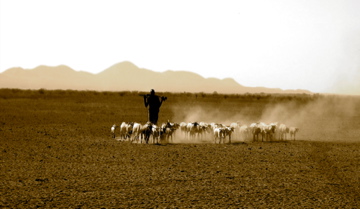‘Low- Carbon Future Village’: The story of Qingshan Village, China, and a new journey of international co-learning
-
From
CGIAR Initiative on Low-Emission Food Systems
-
Published on
29.12.23
- Impact Area

By Wei Zhang, Xinxin Wang, Praveen Kumar and Kevin Chen
Qingshan Village is located in the northeast of Huanghu Town, Yuhang District, in Hangzhou City, Zhejiang province, China. Coordinated through its Living Labs for People, in collaboration with China Academy of Rural Development of Zhejiang University, School of Economics of Zhejiang University of Finance and Economics, and Government of Yuhang District, the CGIAR Research Initiative on Low-Emission Food Systems (Mitigate+) started developing a research-for-impact partnership with the Qingshan Village in 2023.
Merged from three small villages, Qingshan Village covers an area of 45.6 km2 and has a registered population of 2,662. The village has three medium-sized reservoirs, with approximately 80% of the land area covered by forests. Bamboo forestry occupies 90% of the village’s agricultural land, with the remaining agricultural land utilized for rice, tea, and vegetable cultivation. In 2022, agricultural production value reached 90 million RMB (US$12.5 million). Bamboo forestry, which encompasses the production of raw materials and bamboo shoots, represents the primary source of agricultural income for many local farmers.
Since China announced its target for carbon peak and carbon neutrality in 2019, Zhejiang province has been at the forefront of formulating policies to reduce emissions with a recently published timeline and roadmap for achieving carbon peak in 2030 and carbon neutrality in 2060. Hangzhou, the capital city of Zhejiang and where Qingshan Village is situated, was designated by the National Development and Reform Commission (China’s top economic planner) in December 2023 as one of the 25 pilot cities to peak CO2 emissions. Qingshan Village was selected by the Zhejiang province as a pilot “Low (Zero) Carbon Village” in late 2022.
Qingshan Village has undergone four stages of rural development, with impressive achievements achieved over the last two decades in the social, economic, and environmental dimensions (Fig. 1). Its Future Village Council has renewed the connection among villagers based on their shared vision for sustainable rural development. Through organizing and volunteering for local cultural events, people further strengthened their ties and projected positive externality into the region on environmentally sustainable, low-emission development and cultural cohesion.


Research plays a critical role in systematically analyzing factors that contribute to success understanding stakeholder perspectives, drawing lessons for the future, supporting capacity development (such as emission measurement and low-carbon rice practices), and strengthening the science-policy linkage. This ensures that decision-makers have access to cutting-edge science and tools for designing and implementing a low-carbon rural development strategy and action plan, with a focus on achieving a just transition that balances economic development and climate change mitigation.
The Qingshan Village story has provided much inspiration to the Low-Emission Food Systems Initiative in developing a global conceptual framework for the Living Labs for People. Through collaborative research, the Chinese universities and the CGIAR Initiative aim to support the endeavor of the Qingshan Village on decision support analysis (e.g., economic tradeoff and scenario analysis), GHG emission monitoring and measurement, multi-stakeholder governance and participatory innovation co-development.
Achieving carbon peak and carbon neutrality is a key national development strategy. Qingshan Village has embarked on a new journey to foster a “green” economy and promote “high quality” and low-carbon rural development, relying on locally driven innovations and inclusive governance.
Notes:
a In 2015, The Nature Conservancy, Alibaba, Wanxiang Trust and other social welfare organizations jointly established the “Good Water Fund” for the Longwu Reservoir in Qingshan Village, implementing water protection measures such as banning pesticides and fertilizers in the bamboo forests surrounding the reservoir and providing farmers compensation based on market prices of bamboo products. Consequently, the water quality of Longwu Reservoir improved from Class IV in 2014 to Class I a few years into the water protection project, making it one of the best small-scale drinking water sources within 50 kilometers of Hangzhou City.
b Homestay owners who participate in the “Nature’s Good Neighbor Plan” donate 10% of income to the “Good Water Fund” for water source protection. Tourism, homestays and restaurants have emerged as key economic sectors in Qingshan Village. The per capita annual income of villagers has increased from less than 30,000 RMB to 48,800 RMB over the past decade, and the village collective income has increased from 732,300 RMB in 2020 to 1.5 million RMB in 2022.
c Zhejiang province is a leading province in implementing China’s rural revitalization policy and introduced the innovative concept of “Future Village” which aims to create beautiful and revitalized rural areas and to improve rural quality of life, including enhancing roads, sanitation, education, low/ net-zero carbon emissions, and income.
d Zhejiang Carbon peak carbon neutral work leading Group office, 2022.
See more information on the CGIAR Initiative on Low-Emission Food Systems.
Related news
-

Progress and challenges in implementing non-market approaches
Climate Action Science Program23.04.25-
Adaptation
-
Mitigation
To date, more than 20 organizations are registered as support providers to implement non-market appr…
Read more -
-

ASEAN-CGIAR Program charts future course, emphasizing scalability and sustainability
CGIAR15.04.25-
Adaptation
-
Climate adaptation & mitigation
-
Environmental health & biodiversity
-
Food security
-
Mitigation
-
Nutrition
-
Nutrition, health & food security
Bangkok, Thailand - The ASEAN-CGIAR Innovate for Food and Nutrition Security Regional Program recent…
Read more -
-

Study reveals Africa will reach 1.5°C climate change threshold by 2040 even under low emission scenarios
International Livestock Research Institute (ILRI)28.02.25-
Climate adaptation & mitigation
-
Mitigation
New research highlighted in CABI Reviews suggests that all five subregions of Africa will breach…
Read more -
